Paint Depth Gauges & Their Key Role in Machine Polishing
With such a vast range of detailing products now readily available for users to correct blemishes or imperfections on their paintwork, taking up the task of bringing a vehicle back to its best might seem an easier prospect than ever, especially for amateur enthusiasts.
When you have thrown all the elbow grease you have at defects such as surface scratches, swirls or holograms, but the cosmetic appearance of your vehicle will simply not improve, it is more than likely that removal by machine polishing is the only answer.
Whilst professional detailers with their experience in the field will likely already be tuned in to the tips and tricks needed to get the best results, knowing where to start when you are trying machine polishing for the first time can be a different prospect altogether.
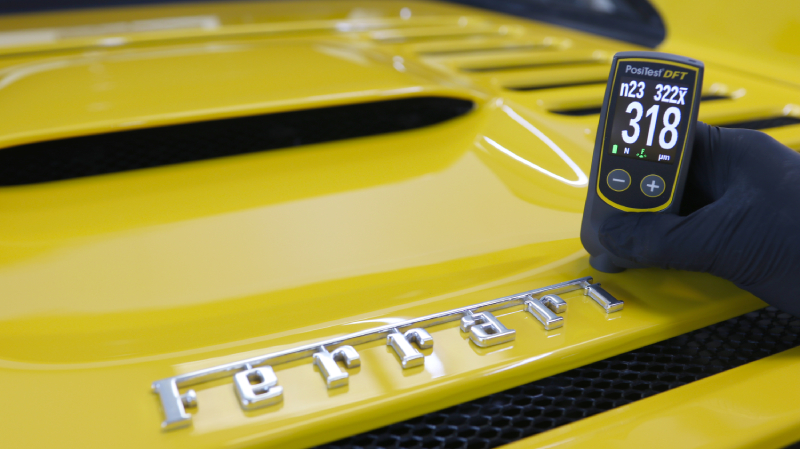
We have covered machine polishing and paintwork here on the UF Blog in greater depth previously, but prior to picking up the polisher for the first time, the importance of understanding the depth of the paint you are going to be working with in the first place is crucial.
In this blog we’re going to explain how Paint Depth Gauges can provide plenty of education behind the history of paintwork and also some peace of mind prior to jumping in with a machine for the first time.
Why Measuring Paint Depth Is So Important?
The obvious route to remove blemishes from paintwork would be to pick up the machine polisher – but think about it, removing imperfections means removing paint. It is at this point where you must pose a couple of questions. How much paint are you likely to remove and how much paint do you have to play with on the surface? Get it wrong and you could end up with a bigger problem on the paintwork than what you started with!
Firstly, let us look at what the paint is comprised of. There are three layers: Primer, Base Colour Coat and Clear Coat (lacquer). The thickness of the paint you see on your car is measured in microns (µm), with 1 micron being the equivalent to one thousandth of a millimetre (1/1000mm). It is the protective top layer Clear Coat which the machine polishing will be removing and by taking the all-important Paint Depth reading, you can ascertain how much paint you have to play with from the outset.
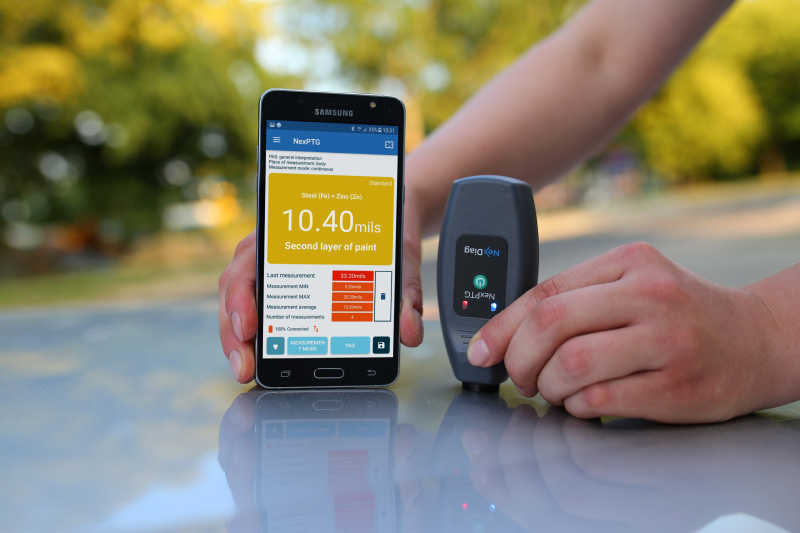
Typically, the total thickness of the three layers on most of the cars we see produced today will be between 67 microns (µm) and 198 microns (µm). Undertaking some machine polishing will likely remove 2-3 microns of clear coat, unless of course a very abrasive compound + pad combination is used. Ordinarily this will normally be enough to remove most imperfections that may be in place.
So, as we have already touched upon, one of the major advantages of a Paint Depth Reader is it will provide a bit of a back story to a vehicle’s paintwork. Take a reading on a panel where the gauge tells you it is greater than 198 microns (µm) and it is more than likely that there has been some form of respray carried out.
Choosing Your Paint Depth Gauges
There are many different models available and typically, the more sophisticated the gauge, the higher the price tag. All of them give the reading for the clear coat and the paint layers combined. Some gauges only work on painted steel panels, others will work on other, non-conductive substrates such as brass, aluminium and plastic.
Established brands like DeFelsko have long proved popular on the professional scene, with the Positest DFT Paint Depth Gauge providing accurate readings across a plethora of substrates and paint types.
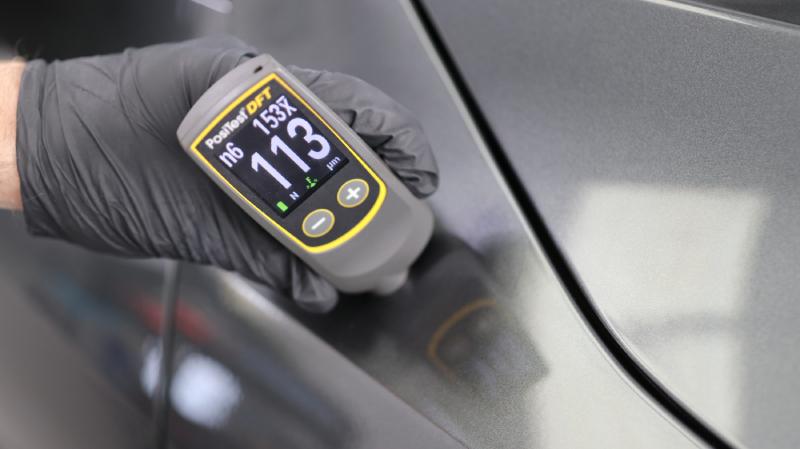
Like so many of the products we are lucky enough to enjoy in the world of car care and detailing, Paint Depth Gauges are continuing to evolve for an even better user experience. The latest offerings come courtesy of NexDiag and thanks to some brilliant innovation, at a very reasonable price point, they are sure to be a hit with both professionals and budding enthusiasts.
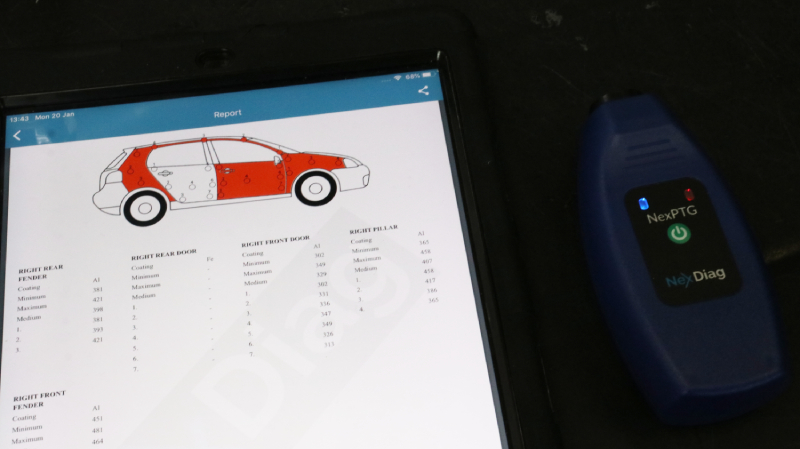
Using a dedicated iOS or Android app, depending on your operating device, the NexDiag experience means readings are communicated to your device by Bluetooth and can be easily recorded. Invest in the NexPTG Professional model and not only can you record up to 4000 measurements, you can also generate vehicle by vehicle reports showing exactly the whereabouts on the car readings were taken, a feature we believe can be a real plus for professionals looking to enhance their clients detailing experience. Produce a before and after report of the vehicle’s paint levels to show a customer how the machine polishing may have impacted the surface and it is sure to be an excellent addition to any modern-day detailing service.
NexDiag NexPTG Professional £145.00

- Suggested measurement points
- Moveable head
- Works on steel, galvanised steel & aluminium
- Buyer’s guide
- Zero feature for rough or curved surfaces
- Extended Lacquer Coating Analysis System
- Export of measurement history
- Creation of reports
- Curve measurement
- V-groove in the probe for positioning on cylindrical parts
- Mils/Microns selection
NexDiag NexPTG Standard Plus £85.00
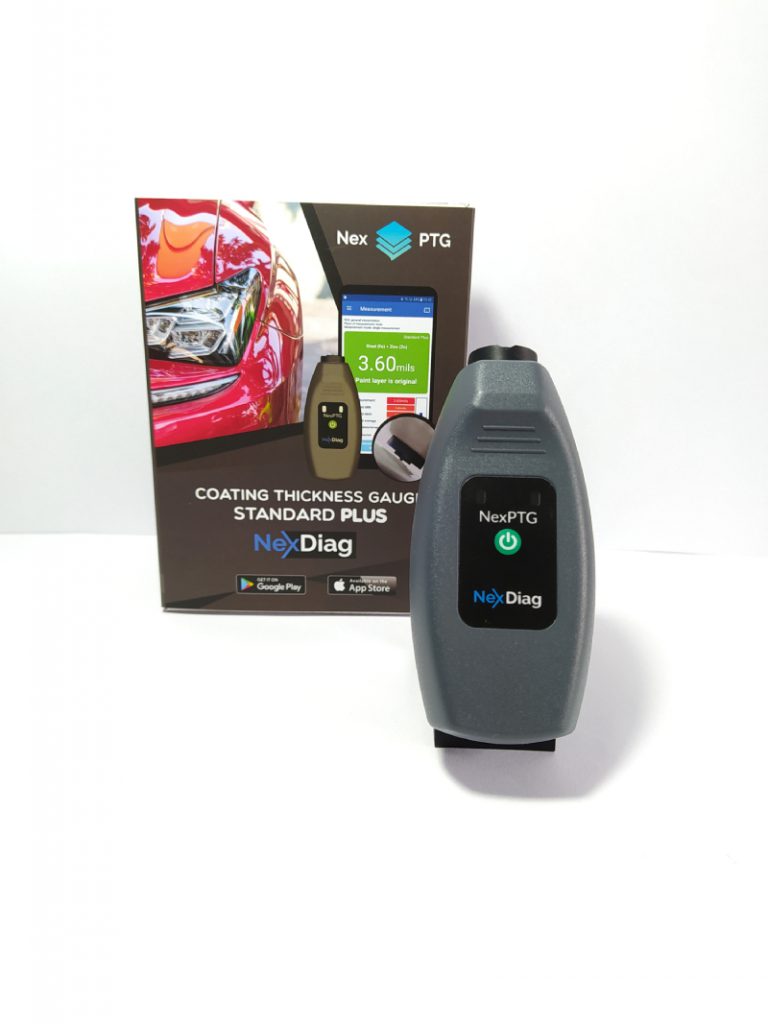
- Suggested measurement points
- Works on steel, galvanised steel & aluminium
- Curve measurement
- Measurement statistics
- Basic Lacquer Coating Analysis System
- V-groove in the probe for positioning on cylindrical parts
- Mils/Microns selection
View all Paint Depth Gauges available to purchase from Ultimate Finish here.
Visit Ultimate Finish for the best car care and detailing products from around the globe.
Have a question on any of our products? Email sales@theultimatefinish.co.uk or call 01474 360 360.
Our team is on hand, Monday to Friday, 8am-5pm.

